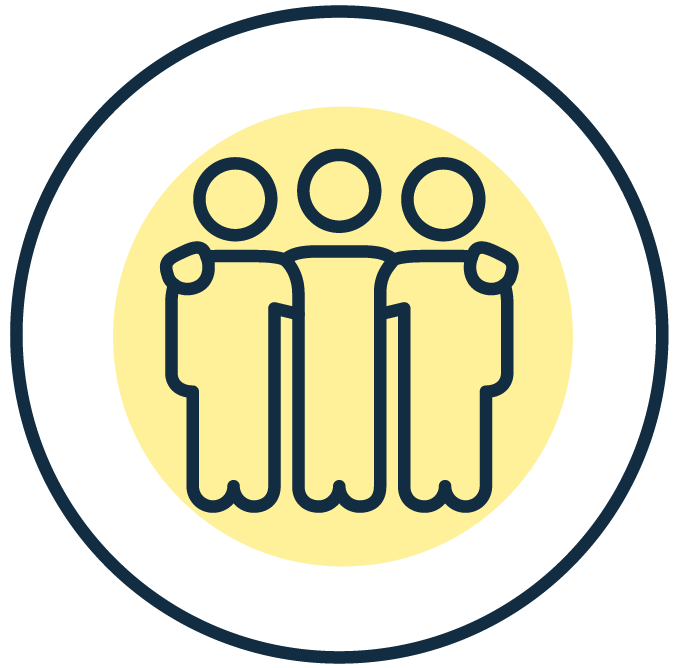Social Connectedness: NCCDPHP’s Program Successes

On This Page: How Right Now | West Virginia

When people or groups have relationships that create a sense of belonging and being cared for, valued, and supported, that’s called “social connectedness.” When people are socially connected, they are more likely to make healthy choices and better able to cope with stress, trauma, adversity, anxiety, and depression. That’s why social connectedness is one of the key social determinants of health.
CDC’s National Center for Chronic Disease Prevention and Health Promotion funds partners to improve the social connectedness as part of our work to achieve health equity. Following is an example of a successful project.
How Right Now Campaign
Pandemics and emergencies are stressful times, full of uncertainty and fear. During the COVID-19 pandemic, many Americans have had feelings of stress, grief, and loss. How Right Now (and its Spanish equivalent, Que’ Hacer Ahora) is a communication campaign designed to promote and strengthen the emotional well-being and resilience of communities.
The campaign aims to help all Americans, but especially those most affected by the COVID-19 pandemic—adults over 65 and their caregivers, people with preexisting mental and physical health issues, people experiencing violence, and those experiencing financial stress.
How Right Now messages represent the real, everyday experiences and emotions that audiences are having and offer practical ways to address them. The pandemic worsened social and structural barriers that the groups most affected by COVID-19 have long faced.
The evaluation of How Right Now / Que’ Hacer Ahora revealed that the campaign has been nimble and responsive throughout the COVID-19 pandemic, meeting its priority audiences where they were, with what they needed, when they needed it.
Overall, the campaign had a potential reach of more than 437 million people during the initial reporting period August 5, 2020 to May 30, 2021. Celebrities on social media had the highest numbers, followed by digital and radio ads, and influencer outreach. Additional social media (eg, retweets) also substantially contributed to reach.
The campaign had positive effects on community engagement and resilience for many of the respondents. However, the biggest changes were seen among priority audiences, including:
- Most likely to be exposed to the campaign.
- More likely to seek information to support their mental health and emotional well-being.
- More confident in their ability to engage with their community as a coping strategy.
Healthy communities are places where people can afford healthy food, be active in safe neighborhoods, and get early, effective medical care. When these communities are socially connected, people don’t just live longer, they live better.
Changes in a Workplace in West Virginia Help Employees Get Breast and Cervical Cancer Screening
Award recipients in CDC’s National Breast and Cervical Cancer Early Detection Program (NBCCEDP) have found many innovative ways to help women get cancer screening. NBCCEDP worked with employers to educate their workers about cancer screening and allow paid time off for the tests.
Pilgrim’s is a large poultry processing plant in West Virginia. Most of its employees are uninsured or underinsured and have no paid sick leave. Many of them don’t own a car and speak little English, making it hard for them to get health care.
In 2019, the West Virginia Breast and Cervical Cancer Screening Program worked with Pilgrim’s Strong Wellness Program and the county health department to provide these employees with screening education and patient navigation. Creating workplace wellness policies combined with patient navigation helps employees overcome barriers that prevent them from getting the health care and other resources they need to be as healthy as possible.
The patient navigators used existing resources and created new materials, trained Pilgrim’s staff to use the resources, and distributed small media messages in English and Spanish. Pilgrim’s adopted a leave policy to make it easier for employees to get screened and held events during all work shifts to educate employees and help them get the cancer screenings they needed.
Results include:
- In the first year, 188 women received one-on-one education and 29 received patient navigation to screening.
- Fourteen women were screened for breast and/or cervical cancer. Several women received additional services during their cancer screening office visit. Four women were tested for other health problems, two got vaccinations, one enrolled in a family planning program, one received lung cancer screening, and one was referred to a surgical clinic for a suspicious growth on her back.
Workplace policies that promote and support employee health and wellness have been shown to foster a sense of belonging to a supportive community and improve morale and the quality of life for employees.
“I think it was good. Let me be honest, I probably would not have gone and did mine [cancer screening] if you had not pushed me into the program,” said an employee at Pilgrim’s.